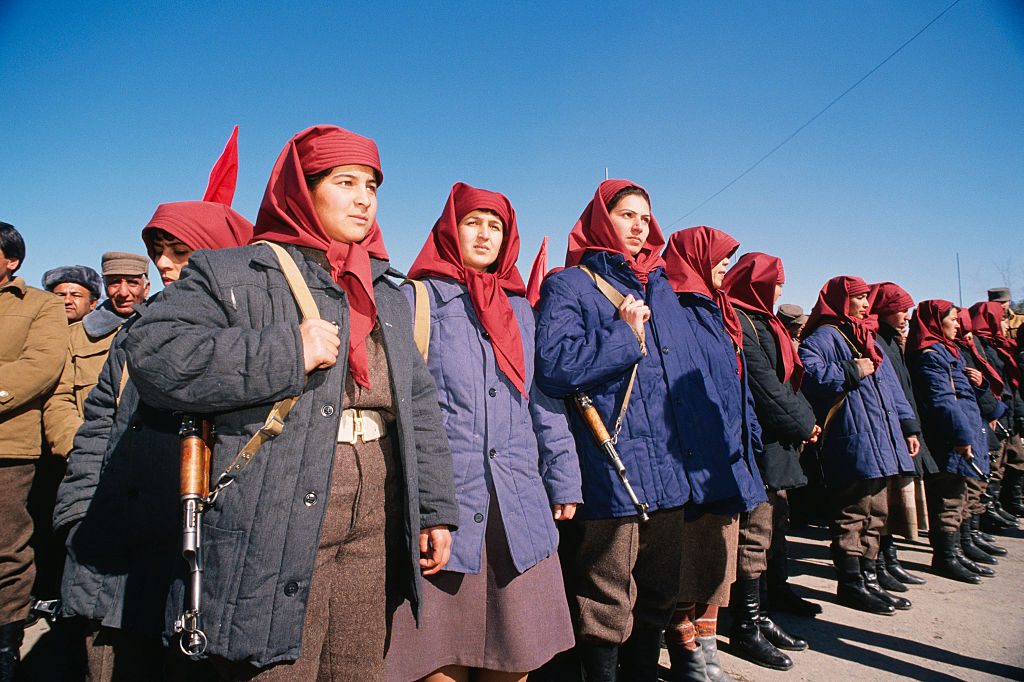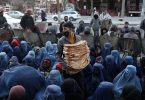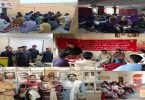By Imran Kamyana
There are turning points in the evolution of societies that determine their direction for quite long periods of time. In this regard, many past events become crucial to understand the current situation and create a perspective for the future. There is always a need to discuss such happenings time and again so that their lessons can be passed on to the new generations. As is correctly said, without the past there is no future.
The Saur (Spring) Revolution of 1978 is one such event, which played a key role in shaping the current situation not only in Afghanistan and Pakistan but also in the entire South Asian region in general. Without knowing, understanding and evaluating it, it becomes almost impossible to devise a revolutionary plan of action in this part of the world.
It is a tragedy that most of the revolutionaries outside this region are not even aware of this historical event, while there is a lot of ambiguity regarding it in the political left even here. While Stalinism, with its typical methods of intrigue and sabotage, always tried to distort the character of this revolution, the imperialists spared no effort to erase it from the pages of history altogether.
In official writings and textbooks, the civil war in Afghanistan began on December 24, 1979, when Russian (Soviet) troops entered the country. However, an entire period before that, up to April 1978, has been obliterated from the pages of history. Few people are aware of the fact that the so-called jihad in Afghanistan (basically the CIA’s Operation Cyclone) was initiated by US imperialism in June 1979, about six months before the entry of Russian troops. Its main objective was to overthrow the revolutionary government of the People’s Democratic Party of Afghanistan (PDPA), which came to power under the leadership of Noor Muhammad Tarakai on April 27-28, 1978 after overthrowing the reactionary and unpopular dictatorship of Sardar Dawood Khan.
The formation of the PDPA government through a revolutionary takeover, mainly orchestrated by the party sympathizers within the military but with popular support, was an event in the region that set alarm bells ringing in the imperialist centers from Islamabad to Riyadh and from Brussels to Washington.
After coming to power, the revolutionary regime courageously and boldly undertook the historic task of bringing Afghanistan out of centuries of darkness, backwardness and ignorance. Abolition of extremely exploitative, usurious loans that kept poor peasants living in humiliation and poverty for generations; distribution of feudal landlords’ lands among poor farmers (land reforms); abolition of reactionary norms, traditions and laws that treated women worse than animals; separation of the state from religion; emergency literacy programs; plans for free provision of healthcare and education; fair distribution of water; initiation of industrialization—these were some of the radical measures that gravely threatened the interests of the local ruling classes and global imperialism.
They also had the potential to appeal to the workers, oppressed nations and exploited masses in general around the world. All this could have awakened more rebellions elsewhere by becoming a point of reference.
On the other hand, the Soviet bureaucracy was also worried about the establishment of an independent and relatively healthy revolutionary government in its neighbor. Contrary to the popular belief, the revolution took place without the intentions and prior knowledge of the Soviet bureaucracy, or else they would not have let it happen. So, the Stalinists in Moscow also wanted to mold the new revolutionary government according to their own designs and bring the whole process under their control.
Few people are aware of the irony that the Russian troops, after entering Afghanistan, fired the first shot at Hafizullah Amin, the head of the revolutionary government at the time. Earlier, Tarakai, the leader of the revolution, was mysteriously found dead in the presidential palace. He is also believed to have been killed by the KGB.
In this way, the Soviet bureaucracy installed Babrak Karmal (who belonged to the PDPA’s opposition faction “Parcham”, which was closer to the Soviets) to power. The arrival of Soviet troops paved the way for a more open and aggressive intervention by the CIA through the Pakistani and Saudi states. These very jihadist groups that were raised with imperialist support and funding fought each other after the withdrawal of the Soviet troops in 1988 and the fall of the Najibullah’s government in 1992, turning Afghanistan into ruins.
In the meantime, to fund these jihadists, the CIA laid an entire network of drug production and distribution in the region, which continues to operate to this day. The enormous black money generated through this business is still the driving force behind state and non-state terrorism and fundamentalism in the region.
The Taliban also emerged from these jihadists later in the mid-1990s, primarily with the backing of the Pakistani state, but also with an understanding with the Americans. Their love and hate relationship with the imperialism have resulted in the current chaotic and disastrous situation in Afghanistan.
 Throughout the 1980s, thousands of “madrassahs” (religious seminaries) were established all over Pakistan, especially in the areas of Khyber Pakhtunkhwa bordering Afghanistan, in order to provide children and youth of the poor families as foot soldiers for this counter-revolutionary imperialist war in Afghanistan. The syllabus for these seminaries was designed and printed by the CIA in the US, and basic
Throughout the 1980s, thousands of “madrassahs” (religious seminaries) were established all over Pakistan, especially in the areas of Khyber Pakhtunkhwa bordering Afghanistan, in order to provide children and youth of the poor families as foot soldiers for this counter-revolutionary imperialist war in Afghanistan. The syllabus for these seminaries was designed and printed by the CIA in the US, and basic  math in these books was explained by numbers of guns, bullets, grenades, and the communist soldiers killed! Similar was the case with grammar, and alphabets were taught as “A for Allah,” “J for Jihad,” etc. (more on this here and here and in pictures). Interestingly, the literal meaning of Taliban is “students”, referring to the pupils at these seminaries—which, turning into another profitable enterprise, continue to expand in size and numbers to this day, while serving as the factories of religious extremism, fundamentalism and bigotry.
math in these books was explained by numbers of guns, bullets, grenades, and the communist soldiers killed! Similar was the case with grammar, and alphabets were taught as “A for Allah,” “J for Jihad,” etc. (more on this here and here and in pictures). Interestingly, the literal meaning of Taliban is “students”, referring to the pupils at these seminaries—which, turning into another profitable enterprise, continue to expand in size and numbers to this day, while serving as the factories of religious extremism, fundamentalism and bigotry.
However, while there was an invasion of the enemies from all directions, the Saur Revolution also suffered from many internal contradictions. In particular, the conflict between the “Khalq” and “Parcham” factions within the party caused irreparable damage to the revolutionary cause.
But there is one more thing to be taken into account here: unlike the US puppet government of Dr. Ashraf Ghani, which did not last even a few weeks against the Taliban without the direct support of its handlers, Dr. Najibullah’s government continued to fight and resist the jihadists for four full years after the withdrawal of the Soviet forces. It shows that, unlike the former, the latter—which was a continuation of the PDPA government, albeit in a deformed manner—had the support of a much larger section of the Afghan population. During this time, the soldiers of the Afghan Revolutionary Army, including a large number of women, inscribed many chapters of unprecedented courage and sacrifice against the arch-reactionary and counter-revolutionary proxy groups.
The Battle of Jalalabad can be taken as a reference point of this heroic struggle in defense of the revolution. However, after the collapse of the Soviet Union, the refusal of Boris Yeltsin’s government to supply fuel and weapons became the main reason for the fall of the Najibullah’s government. The darkness that engulfed Afghanistan still continues to torment the Afghan masses with lives of the women particularly becoming a living hell.

Armed women from one of the revolutionary militias defending the revolution against US backed jihadists
The counter-revolution in Afghanistan also casts its shadows not only on the neighboring countries but in many ways all over the world (the forces like ISIS can fairly be considered the byproducts of the process initiated by imperialism in Afghanistan). Yet these sufferings, atrocities and miseries are not the destiny of Afghan workers and youth. The Saur Revolution of 1978, despite all its weaknesses and mistakes, is a ray of hope even in these dark times, and proves that even in the most backward regions and in the most difficult situations, this system of oppression and exploitation can be challenged and overthrown.
The new generation of Afghans will have to take lessons from this brief yet glorious episode of their history, and march forward with the red banner of revolutionary socialism in unity with their class brethren and sisters throughout the region and beyond for a revolutionary emancipation






